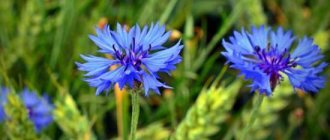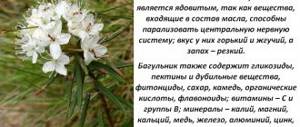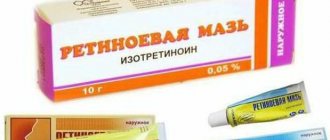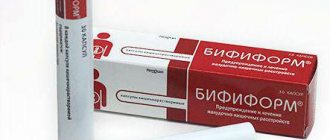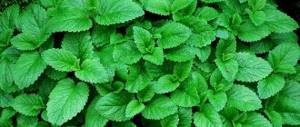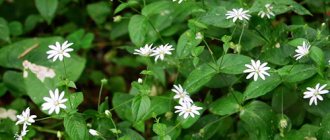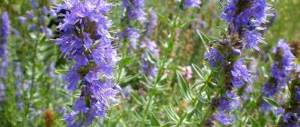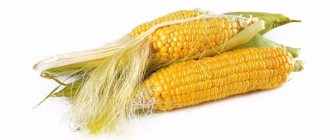Zelenka or brilliant green is one of the most popular medicines in our country. Externally, it is a transparent liquid of bright green color. It is applied to any damage to the skin and is considered almost a panacea. But at the same time, this remedy is not used anywhere in the world, except in the countries of the former USSR. What is the beloved “green stuff” and why is it only we who love it?
Release form and composition
The drug brilliant green is usually produced in the form of a one or two percent alcohol solution . Sometimes it can be found in powder form. The substance itself is an aniline dye and has been used as such for a long time. But today it is better known as an antiseptic.
It is obtained exclusively synthetically using rather complex reactions . First, diethylaniline is condensed with benzaldehyde. It produces 4,4'-bis-diethylaminotriphenylmethane, which is then oxidized with manganese(VII) or lead(IV) oxide to produce a carbinol base. This substance is then mixed with oxalic acid and the reaction produces brilliant green, the formula of which is C29H34O4N2.
To use it to treat leather, the solid dye must first be diluted in alcohol; it can also be diluted in water, but this is done much less often. If you compare brilliant green with iodine, you will notice that its antiseptic properties are much weaker, but it does not dry out the skin. Therefore, it is more often recommended for children and sensitive people. This substance may also be part of other medications: for example, callus fluid or Novikov fluid.
How does greenery work?
Brilliant green has an antimicrobial effect, but it is practically not absorbed into the body and does not damage tissue . Therefore, it is applied even to open wounds. The presence of ethyl alcohol in the composition only increases the effectiveness of this product. At the same time, it is very cheap and easy to use.
Contrary to popular belief, brilliant green does not cure chickenpox at all. Initially, doctors used a bright dye to mark existing pimples and fix new ones. This helped determine when the patient became non-infectious and monitor the recovery process.
An alcohol solution of brilliant green effectively fights gram-positive bacteria and most pathogenic fungi, and easily copes with Staphylococcus aureus and diphtheria bacillus. There is also an opinion that brilliant green activates the wound healing process, but it has no scientific confirmation.
"Red brilliant green" Fukortsin - application
Fukortsin, whose indications for use include the most common types of skin damage found in everyday life and in nature, is an almost universal antiseptic. Moreover, the drug is effective both for an already developed infectious process and for its prevention in case of a high risk of infection by bacteria or fungi. If you use Fukortsin for the listed lesions, the use of this solution will help to quickly stop inflammation, prevent weeping and speed up healing.
Considering the indications, Fukortsin can be used for self-medication, but you should follow important recommendations:
- the solution is applied pointwise to the lesions using a cotton swab or cotton swab;
- Do not apply the product to large areas of skin;
- It is unacceptable to treat open wounds with medicine (only the edges);
- after applying the drug, there is likely a feeling of mild burning and itching that goes away after a couple of minutes;
- Fukortsin treatment can be carried out 2-4 times a day;
- The product should be used carefully so as not to stain clothes, household items, linen, etc.
Fukortsin for chickenpox
(chickenpox) is a viral disease that most people contract in childhood. A characteristic symptom of the pathology is the appearance of a generalized itchy rash (initially in the form of pink spots, then in the form of papules and vesicles). Fukortsin is often used for children with this disease, but not for the purpose of neutralizing the virus that causes the rash, but to prevent secondary bacterial infection as a result of scratching the inflammatory elements.
Fucorcin can only be applied to pimples that appear due to chickenpox, without affecting healthy skin and mucous membranes, and before doing this, you should obtain the approval of your doctor. The product can somewhat reduce itching and speed up the healing of the rash, which, with the right approach to treatment, goes away without a trace. In addition, thanks to the coloring properties of the drug, new elements can be “marked” in order to track when they stop appearing. This way you can find out when the child is already allowed to communicate with healthy children without the risk of infecting them.
Fukortsin for streptoderma
Rashes due to a disease such as streptoderma are caused by streptococci and their metabolic products that penetrate the skin. Depending on the severity of the lesion, both systemic antibiotic drugs and local agents for direct treatment of the lesions can be prescribed for treatment. Fukortsin solution is often used for this disease.
Castellani liquid should be applied to the rash areas 3-4 times a day, remembering that it is prohibited to wet the lesions with this disease in order to avoid the spread of infection to other areas and aggravation of the inflammatory process. In addition, when treating streptodermic lesions with Fukortsin, you should avoid treating the perioral area, orbital zone, mucous membranes of the oral cavity, nose and genitals with this antiseptic.
Fukortsin for fungus
“Red brilliant green” is an effective remedy against superficial fungal infections of the skin caused by various types of pathogenic fungi. For this purpose, it is recommended to treat the infected areas of the skin with the drug several times a day until the skin acquires a healthy appearance and structure. If the affected area is large, preference should be given to another external remedy.
As for the possibility of using Fukortsin solution against nail fungus, in this case the drug is ineffective, because is not able to penetrate the thickness of the nail plate. This antiseptic can only be used to prevent fungal infection when the nails are injured (in case of careless cutting, breaks, etc.), due to which healing will occur faster.
Fukortsin - application in gynecology
Many people are interested in whether Fukortsin can be used to treat various gynecological problems. Indications for the use of the drug Fukortsin do not include its use for pathologies of the female genital area, but this does not prevent its active use. Thus, treatment with Fukortsin is carried out for rashes on the genitals (genital herpes, candidal vulvitis, etc.). It is worth noting that in these cases, therapy is not particularly effective, and for such diseases it is better to use medications specifically designed for their treatment.
Indications for use of brilliant green (Video)
In our country, this inexpensive medicine is a kind of first aid for any skin damage . It is recommended for any scratches and cuts, as well as for treating postoperative scars. The instructions allow children to use this drug from birth, so previously all newborns had their umbilical wounds treated with brilliant green.
For older children, brilliant green is recommended to lubricate insect bites and chickenpox rashes. Although it, as mentioned above, does not cure this disease, it kills pathogens and helps relieve itching. It is also recommended as an adjuvant for many purulent inflammations of the skin: for example, pyoderma, furunculosis, carbunculosis, local staphylococcal infection .
The lethal dose of brilliant green for a white rat is 0.05 g/kg.
You can also use brilliant green for infectious and inflammatory eye diseases: for example, blepharitis (inflammation of the eyelids), hordeolum (barley), meibomitis (internal barley) . In such cases, the medicine is carefully applied to the affected areas of the eyelids.
Use of brilliant green during breastfeeding. Diamond Green
Adults and children are familiar with the medicine for treating scratches and abrasions - brilliant green (popularly called brilliant green).
Folk instructions for brilliant green
What is brilliant green made of?
In the production of brilliant green, an aniline dye of the triphenylmethane series is used. This discovery occurred in 1879 in Germany. The dry substrate consists of small lumps or is a green powder with a glossy surface. The liquid preparation we are familiar with is prepared by dissolving this solid dye in water or medical alcohol.
An aqueous solution of brilliant green is used mainly for treating mucous membranes, and the pharmacy accepts orders for its production. An alcohol solution is constantly available for sale.
About the release form
The product is produced in the form of a 1-2% alcohol or aqueous solution in 10 ml bottles.
About the shelf life of the solution and powder
The shelf life expires after 2 years; the powder has no expiration date.
Effect of brilliant green
The demand for the product lies in the fact that its use leads to immediate sterilization and destruction of all pathogens. In this case, however, undesirable consequences may occur - irritation and burns. This explains the reasons for its exclusively external use.
What do they smear with brilliant green? Application
The drug is prescribed by doctors for the treatment of pustular infections, for example, pyoderma (pustular skin lesions).
The drug is used in the treatment of blepharitis (inflammation of the eyelids). Diseases such as gonorrhea, syphilis, trichomoniasis and AIDS are also subject to it, however, if it is possible to neutralize them externally.
In addition, “green medicine” is widely used in gynecological procedures. Zelenka remarkably sterilizes wound surfaces.
It is noteworthy that thanks to these properties, brilliant green also finds its place in surgery.
The surgical field and postoperative post-traumatic scars can be treated with this antiseptic.
If a stye begins to appear, spot-smear the eyelids with an alcohol solution of brilliant green. In the treatment of meibomitis (internal stye), “our” drug also plays a role. Its inclusion in the number of medications can reduce treatment time.
An aqueous solution of brilliant green 1% is indispensable when caring for a child at any age: it is used to lubricate the umbilical wound of a newborn, diaper rash, and pimples. In addition, they cannot do without it when treating chickenpox, which helps reduce rashes, itching and residual effects.
Brilliant green has bactericidal capabilities, has a detrimental effect on microorganisms, and stops the growth of yeast fungi of the genus Candida.
Zelenka or iodine?! Note!
Brilliant green is recognized by experts as having a milder action compared to iodine and manganese, which is why it has been used since birth.
Zelenka is an antiseptic and acts as an analogue of ethyl alcohol and alcoholic tincture of iodine. But brilliant green should not be equated with iodine-containing drugs. Their difference lies not only in color. Yes, iodine and brilliant green are antiseptics. But iodine has a more pronounced drying effect.
Zelenka - belongs to the category of softer and weaker antiseptics, has the ability to stimulate wound healing and does not dry out the skin. It is recommended to use brilliant green in cases where fabrics the size of a five-ruble coin or more are processed. However, brilliant green is prohibited when it comes to bleeding or allergies.
It should be noted that this remedy has no practical application in international medical practice. In other countries, a product such as Mercurochrome is used instead. Like Miramistin, this replacement is not entirely correct, due to the fact that Mercurochrome is also a flawed drug.
About application
The instructions for using brilliant green prescribe the use of the designated drug for external use only. Brilliant green is used externally in the form of 1–2% alcohol and aqueous solutions. The area of skin requiring medical intervention must be treated 2-3 times a day.
For small patients and for injuries to the mucous membranes in adults, lubricate with a 1% aqueous solution of dye.
What does brilliant green cure?
The drug is used for eye diseases, minor skin lesions, and viral diseases such as herpes, chicken pox. In addition, there are indications for the use of brilliant green when the following diagnoses are established: folliculitis, boils, abscesses, aphthae, streptococcal infections.
An alcohol solution of brilliant green is an antiseptic that we all know from childhood under the name “green”. Correct use of this substance allows you to disinfect wound surfaces, relieve skin itching during chickenpox and reduce the area of the external inflammatory process.
In terms of its composition, it is a synthetic preparation, which is produced on the basis of aniline group dyes. It has a slight toxic effect when taken orally. Therefore, only external use of brilliant green on limited areas of the skin is allowed.
Available in pharmacy chains in the form of an alcohol solution and powders for preparing mixtures. Concentrations of 1% and 2% are used.
After application to the wound surface, the death of pathogenic microflora is achieved within 2 to 5 minutes. Active against gram-positive microorganisms.
Effective against all types of staphylococci and diphtheria bacillus. Anaerobic flora is not resistant to the components of this antiseptic.
Also, brilliant green helps protect the skin from the effects of all types of fungi.
Instructions for the practical use of brilliant green
The instructions for use recommend using the brilliant green solution for:
- wounds of the upper layers of the epidermis;
- treatment of postoperative sutures;
- chicken pox;
- erysipelas of the skin;
- acne and folliculitis.
For shingles and chickenpox, it not only helps to effectively eliminate skin itching, but also limits the areas of spread of the rash. A weak antiviral effect is also observed. This shortens the recovery period and is a factor in deterring relapses of the disease in the future.
The only method of application is application to the outer skin no more than 3 times a day. During treatment, the boundaries of exposure are expanded by approximately 0.5 cm around the affected tissue.
If you have a powder of the active substance at your disposal, then before use, dissolve it in a certain amount of alcohol with a concentration of 70%.
You should not use brilliant green on surfaces with purulent secretions and with a high degree of sensitivity, which occurs in approximately 8% of people.
It is interesting to note that almost nowhere in the world, with the exception of the countries of the former CIS, this drug is not used in medical practice, because it is considered ineffective, and even unaesthetic.
Release forms and composition
The drug is released in the form:
- 1% and 2% alcohol solution, 1 ml of which contains 0.01 or 0.02 g of brilliant green;
- Powder.
The substance itself, brilliant green, is an aniline dye of the triphenylmethane series; in dry form it is a powder (or small lumps) of a golden-green color with a shiny surface. Brilliant green is obtained by dissolving this solid dye in 60% medical alcohol, or less often in water.
Similarly, the solution can be prepared at home by purchasing brilliant green powder.
In addition, this substance is part of some other antiseptic drugs. The most famous of them:
- Callus fluid, which also contains salicylic acid. Designed to combat calluses;
- Novikov's liquid, which also contains tannin, collodion and castor oil. Used to treat cracks, wounds, abrasions, etc.
This aniline dye is also used in the manufacture of bactericidal adhesive plasters.
Pharmacological properties of Diamond Green
Brilliant green is a synthetic antiseptic for external use that has antimicrobial activity against gram-positive bacteria, Staphylococcus aureus, diphtheria bacillus and streptococcus, and inhibits the growth of yeast fungi of the genus Candida.
Gram-negative bacteria are not sensitive to it.
Diamond green: indications for use
The instructions for Diamond Green indicate that this antiseptic is intended for the treatment of:
- minor skin damage: cuts, wounds, abrasions, burns and other violations of the integrity of the skin;
- infectious eye diseases, in particular blepharitis and meibolitis (barley);
- viral skin diseases: chickenpox and herpes (to prevent secondary infection);
- postoperative and post-traumatic scars;
- purulent skin lesions (pyodermatitis): sycosis, aphthae, carbuncles, sycosis, folliculitis, abscesses, boils, staphylococcal and streptococcal impetigo, etc.
Brilliant green solution is used to treat the surgical field before and after surgery. This drug is also used in hospitals as a disinfectant impregnation of bandages.
Diamond Green: Application and Dosage
The alcohol solution of Diamond Green, according to the instructions, is intended exclusively for local and external use. They lubricate damaged areas of the skin, capturing the surrounding healthy tissue, 2-3 times a day.
An aqueous solution of brilliant green is used to treat the mucous membrane in adults and to treat skin lesions in young children.
A 1% aqueous solution is used to treat the umbilical wound of newborn babies, to lubricate insect bites, pimples, diaper rash and rashes due to allergic diathesis.
It is brilliant green that is the most popular antiseptic used to treat chickenpox blisters. Thanks to this antiseptic, they dry better and practically do not itch, so the child scratches the rashes less.
Thus, the blisters heal faster, do not become infected and do not leave marks.
Contraindications to the use of the drug
The use of Diamond Green is prohibited in case of heavy bleeding or very wet wounds.
It should not be used in case of individual hypersensitivity to the components.
Side Effects of Diamond Green
Zelenka is the most common disinfectant that has been used for more than one generation. By the way, aniline dye was synthesized almost 1.5 centuries ago - in 1879 in Germany. During this time, there were many reviews about this drug, among them no serious side effects were ever described.
The only thing is that when applying brilliant green to a damaged surface, a burning sensation occurs, which is caused by the alcohol included in its composition. However, this unpleasant feeling passes quickly enough.
However, you should know that there are theoretically possible side effects of this antiseptic in the form of allergic reactions (itching and urticaria) if a person has hypersensitivity to the components of the product.
It is also worth keeping in mind that when the substance comes into contact with the mucous membrane of the eyes, lacrimation occurs.
special instructions
Brilliant green should not be used simultaneously with other disinfectants if they contain alkali, chlorine or active iodine (including ammonia solution).
The fact is that when used simultaneously with other external preparations that contain organic compounds, denaturation of proteins is possible and, as a consequence, the formation of new chemical compounds, the effect of which cannot be predicted.
When treating damage to the mucous membranes, only an aqueous solution should be used, since alcohol can cause severe irritation and even burns.
The antiseptic does not have a negative effect on the ability to drive vehicles or perform potentially dangerous tasks.
Sales rules and storage conditions for Diamond Green
Brilliant Green is an over-the-counter antiseptic.
If you follow the storage rules - dry, cool, inaccessible to direct sunlight, away from heat sources - the shelf life of the Brilliant Green alcohol solution is 2 years, but there are no time limits for using the powder.
Popular articles Read more articles
02.12.2013
We all walk a lot during the day. Even if we have a sedentary lifestyle, we still walk - after all, we...
604463 65 More details
Source: https://www.eco-portal.ru/primenenie-brilliantovogo-zelenogo-pri-kormlenii-grudyu.html
Why is she not loved in the world?
Most of our compatriots, when they see any wound, immediately think of green stuff. Since childhood, we have become accustomed to painted knees and the strange green leopards that those with chickenpox turn into. Why is this miracle remedy not used in any other developed country in the world?
It's very simple - they don't consider it appropriate. There are no documents prohibiting the use of brilliant green; moreover, it is included in the list of approved products. But doctors do not recommend this remedy to patients due to the fact that it has not been fully studied and has no proven effectiveness .
Bright, non-washable color is one of the disadvantages of the drug
In addition, it should be noted that the effectiveness of the drug is also not proven. The fact that we have been using it for many decades is not proof for official medical science; research results are needed. And who wants to spend time and money proving the effectiveness of aniline dye diluted in alcohol, if there are a huge number of good drugs that can easily replace it? The supposed carcinogenic properties of the drug also remain unstudied.
The creator of greenery, William Perkin, became rich thanks to it and even became a knight. He produced chemical dyes for fabrics that were much more durable and brighter than natural ones. And their bactericidal properties were discovered much later.
Separately, it should be said about the bright green color that the patient’s body turns into after using this product. The only plus is that children like it. But the downside is much more significant - the paint makes it difficult to assess the condition of the wound and its healing process . That is why modern pediatricians categorically prohibit smearing the umbilical wounds of newborns with green paint. Under a layer of paint, you can easily not notice suppuration and other problems.
Therefore, all lovers of greenery should also think about whether it is worth using such an old medicine with unproven effectiveness and safety, or whether it is better to choose something more modern.
| Diamond green | |
| Vir >[1] | |
| Chemical compound | |
| IUPAC | Bis-(p-diethylamino) triphenyl anhydrocarbinol oxalate |
| Gross formula | C27H34N2O4S |
| Molar mass | 475.6 g/mol [2] |
| CAS | 633-03-4 |
| PubChem | 12449 |
| Classification | |
| Pharmacol. group | Antiseptics and disinfectants [2] |
| ATX | D08AX |
| ICD-10 | H 00.0 00.0 , H 01.0 01.0 , L 08.0 08.0 , L 73.9 73.9 , T 14.0 14.0 , T 14.1 14.1 [2] |
| Dosage forms | |
| solution for external use (alcohol) 1%, 2% | |
| Other names | |
| Brilliant green solution, Brilliant green, Brilliant green, Brilliant green solution, Brilliant green, GPC, Brilliantgrün | |
| Media files on Wikimedia Commons | |
Instructions for using brilliant green, properties of the drug
Almost all of us have been accustomed to seeing specks of green on our bodies since childhood. The dark bottle was an integral part of any first aid kit.
Wounds, cuts and abrasions were primarily treated with brilliant green.
But few people know that this simple penny remedy actually has a long and interesting history.
- How did the brilliant green appear?
- Instructions for use
- Composition and release form of brilliant green
- Properties of brilliant green
- Indications for use
- Features of application
- Contraindications
- The use of brilliant green for chickenpox
- How to get rid of green stains
How did the brilliant green appear?
The use of this remedy is widespread mainly in Russia; it would be logical to assume that its homeland is here. But in fact, brilliant green is a European invention .
The history of this drug begins with how one novice chemist, William Perkin, tried to invent a cure for malaria. This was in the middle of the 19th century, when this disease posed a huge danger to people. Unfortunately, the chemist never achieved his final goal.
But in the process of his experiments, he invented a green substance that dyed fabric very firmly.
After William Perkin became disillusioned with his efforts to invent a drug, he decided to devote his life to the textile industry.
It was precisely those chemically produced dyes, including brilliant green, that helped him bring his decision to life. A factory was opened for their mass production.
And since the color fastness was not in doubt, the dyes became widely known. This is how brilliant green came into the big world.
In the 20th century, it returned to the laboratory. Scientists began to use this product to tint the environment with various microorganisms. It was convenient to examine such colored preparations under a microscope.
But suddenly it turned out that those same microorganisms die upon contact with brilliant green. Quite quickly the conclusion was made about its antiseptic properties. The death rate from blood poisoning soon fell sharply.
Because any surgical operation and wound treatment could not be done without brilliant green.
Instructions for use
Like many long-used medicines, brilliant green has acquired some myths over time. In addition, due to the apparent simplicity of the tool, not many are puzzled by the question of the rules for its use.
Nevertheless, brilliant green is a medicinal product . This means that it has instructions for use that you need to know and follow.
Composition and release form of brilliant green
The composition of this product depends on the form in which it is sold. The most well-known type of brilliant green is an alcohol solution:
- 1-2 grams of brilliant green powder;
- 100 ml of 57 percent ethyl alcohol.
Also, brilliant green is sold simply in the form of a dry powder that can be diluted in water. In order for an aqueous solution to be used for medicinal purposes, the concentration of the drug in it must be from 0.1% to 2%.
One of the most convenient forms of releasing brilliant green is a pencil. It allows you to do without the additional use of cotton wool, is easy to apply and does not stain your hands.
But since its treatment surface is in direct contact with the wound, with repeated use the sterility of such a pencil begins to be questionable. Therefore, it is still optimal to use a solution of the drug.
Moreover, it is currently available both in the form of sprays and in bottles with a pipette, which allows you to avoid inconvenience when using it.
The price of the drug is very low, from about 15 rubles per bottle. This makes it one of the most affordable antiseptics suitable for home use.
Properties of brilliant green
Brilliant Green is an antimicrobial and disinfectant . It has an antiseptic effect without causing harm to the tissues to which it is applied. An alcohol solution is doubly effective , since alcohol itself also works well against germs.
Zelenka acts very gently , does not threaten to dry out or burn the skin and is not absorbed in excessive quantities. It accelerates wound healing and copes well with gram-positive bacteria, Staphylococcus aureus, pathogenic fungi and diphtheria bacillus. But the effectiveness will be high only if you follow the rules for using brilliant green.
Indications for use
Zelenka is very popular as first aid for minor injuries . At home, this drug is used to treat cuts, minor wounds and scratches.
For postoperative stitches and post-traumatic scars, brilliant green also serves as an excellent healing agent. It will not only have the desired disinfecting effect, but will also stimulate skin regeneration.
Due to the gentle action of brilliant green, the drug is also suitable for newborns. For example, it can be used to treat the umbilical wound.
But brilliant green is good not only for treating skin lesions. It is successfully used for the following unpleasant diseases:
- furunculosis;
- carbunculosis;
- pyoderma;
- local staphylococcus.
This drug is also used to treat infectious eye diseases :
- blepharitis;
- sty;
- meibomite.
When these diseases occur, the eyelids are carefully smeared with brilliant green. This must be done very carefully, since if the drug gets into the eyes it will cause a sharp burning sensation and tearing.
As a nice bonus, brilliant green can be used to treat the effects of insect bites. The drug will successfully relieve that irritating itching that occurs after contact with mosquitoes and other flying and crawling bloodsuckers.
Features of application
When treating a wound, brilliant green is applied directly to it and to the healthy skin around the injury. You should not pour too much of the drug, as in this case there is a risk of remaining with unsightly stains for a long time.
It is better to treat the wound with a cotton swab, on which a little green antiseptic has been previously applied. The procedure should be repeated when the stain is clearly discolored.
If a bandage is made over the wound, then with each dressing the treatment is done anew, but not more than once a day.
Contraindications
The drug practically does not cause allergies and does not threaten the skin, so it is suitable for any age. But there are still several contraindications that should be considered carefully:
- Application to mucous membranes and wet skin lesions is prohibited;
- in case of profusely bleeding wounds, you should first stop the bleeding with hydrogen peroxide, otherwise brilliant green will not have the desired antimicrobial effect;
- it is forbidden to use brilliant green simultaneously with iodine and antiseptic preparations that contain alkali or chlorine;
- brilliant green is intended exclusively for external use;
- It is prohibited to use the drug in case of individual intolerance.
Even in the absence of contraindications, brilliant green has two unpleasant side effects:
- burning when the product gets into an open wound or eyes;
- ugly, poorly washed off green spots in the treatment areas.
But the benefits of this drug often outweigh these disadvantages.
The use of brilliant green for chickenpox
Chickenpox is one of the most common viral diseases. First of all, it is marked by the appearance of many very itchy blisters filled with liquid.
Chickenpox cannot be treated with medications; you just need to wait it out. But from the very first manifestations of the disease, pediatricians recommend lubricating each blister that appears with brilliant green.
Therefore, many parents believe that this drug is intended specifically for treatment.
In fact, brilliant green in this case plays the role of a dye rather than a medicine. The fact is that chickenpox is an infectious disease, so during it the patient should be isolated from people who have not been sick before.
The patient stops being contagious only five days after the last blister appears. But because there are so many rashes and they are spread all over the body, it was difficult to track the occurrence of the blisters. That’s why doctors started using brilliant green, marking existing blisters with this drug.
Thanks to this, the appearance of new blisters did not go unnoticed, as did the cessation of rashes.
How to get rid of green stains
Long-lasting green spots on the skin and clothes are the most unpleasant consequence of using brilliant green . The drug gradually disappears from the skin on its own.
If you need to speed up the process, you can try to wash the stains with hydrogen peroxide or any products containing alcohol. Acetone and bleach will also work.
Of course, these products can only be used to remove brilliant green from completely healthy skin.
In the case of clothing, the situation is more complicated, since this drug is a very stable dye. To remove stains from fabric, it is best to go to a dry cleaner .
If this is not possible, treating clothes with bleach or acetone may help. True, this method is only suitable for cotton materials.
For others, it is better to use modern stain removers made specifically for a specific type of fabric.
Brilliant Green is a drug with high effectiveness and low price . Therefore, even a possible problem with subsequent stains should not prevent its use.
Source: https://lekarstva.guru/z/instruktsiya-po-primeneniyu-zelenki-svojstva-preparata.html
History and etymology [edit | edit code]
Brilliant green was first produced in 1879 in Germany. The antiseptic properties of this substance were learned only in the next century, when, when staining preparations for microscopy, it was discovered that one of the dyes - namely brilliant green - destroys microbes.
In the mid-20th century, brilliant green, durable and cheap to produce, became widespread in the Soviet Union [6] [7].
The name of this dye came into Russian from the French language. In dry form, brilliant green appears as golden-green lumps, according to lat. viridis nitens, literally “brilliant green.” When translating into French, the word fr was used. brillant - “brilliant”, which was literally translated into Russian as “diamond” [8] [9].
Apart from Russia and several countries in the post-Soviet space, brilliant green is not used in medicine anywhere else, although, for example, in Europe it is included in the list of [10] approved medications. The following reasons can be cited for this: firstly, it is still not known for sure whether brilliant green has carcinogenic properties; and secondly, when using a drug, the aesthetic side is also important, which is why changes in the patient’s appearance when using the drug are also taken into account [9].
In the post-Soviet space, a solution of brilliant green is widely known under the colloquial name “zelyonka”.
In the Soviet and Russian criminal environment, there is an expression “to smear the forehead with green paint,” which initially meant execution (death penalty), and later simply murder (using a firearm). This expression arose during the Stalinist repressions, when prisoners who were executed or died had their prisoner number written on their thigh in green paint. Therefore, initially there was an expression: “to smear green on your leg,” and they began to talk about “forehead” later, although the forehead had nothing to do with writing the number with green [11].
Writer N.V. Gornov used the phrase “Diamond Green” as the title of one of his science fiction stories [12].
Properties [edit | edit code ]
In Russia, the quality of brilliant green dye is regulated by TU 6-09-4278-88 [13].
Physical [edit | edit code]
Greenish-golden lumps or golden-green powder [1] [5] [14] [15] [16]. Slightly soluble in water (1:50) and ethanol, soluble in chloroform [1] [2] [14] [15] [16]. Solutions in water and ethanol have an intense green color [1] [15] and decompose when exposed to direct sunlight [1] [5].
The color of this compound is due to the presence of two chromophores: electron-donating (an amino group with two substituents) and electron-withdrawing (four-charged nitrogen of a tertiary amino group). The chromophores are connected through a conjugated system of π bonds, through two benzene rings and a double bond between them [17]. The maximum of the light absorption curve is at 625±0.5 nm [5].
Chemical [edit | edit code]
When concentrated hydrochloric acid is added to a 0.2% solution of brilliant green, an orange color appears, and when a NaOH solution is added, a pale green precipitate of the base precipitates (these reactions are used to establish authenticity) [14] [15].
Incompatible with disinfectants containing active iodine, chlorine, alkalis (including ammonia solution) [17] [18].
Receiving [edit | edit code ]
Diamond green is obtained only synthetically. The synthesis is reduced to the catalytic condensation of diethylaniline with benzaldehyde; The resulting 4,4'-bis-diethylaminotriphenylmethane is oxidized on a catalyst - most often lead (IV), manganese (VII) or chromium (VI) oxide. The carbinol base thus obtained is dehydrated by heating and, when neutralized with oxalic acid, forms brilliant green [15] [19] [17].
Release form: powder [1]. Produced as salts of bis-(para-diethylamino)-triphenyl anhydrocarbinol with various anions:
- Oxalate (CAS 23664-66-6) is the most widely used in medicine [1].
- Sulfate (CAS 633-03-4) - used for the photometric determination of certain chemical elements and as a pH indicator [20] [21] .
- Base (CAS 630-98-8) [22] .
Application [ edit | edit code ]
In medicine [edit | edit code]
In the territory of the former USSR, a solution of brilliant green is used as an antiseptic drug [14] [15] (in the USA and the European Union it is allowed as an antiseptic [10], but is practically not used), as well as for the disinfection of medical instruments [1] [16 ] . A 1% or 2% alcoholic solution of oxalate is used as a medicine (in 57% ethanol, less often - isopropanol and in the form of an aqueous solution, from 0.1% to 2%, in accordance with the recommended dosage) [1] [19]. also available in pencil form [17] [23] .
Indicated for use for the disinfection of fresh postoperative and post-traumatic scars, umbilical cords of newborns, abrasions, cuts, and other violations of the integrity of the skin, in the treatment of purulent-inflammatory processes of the skin - hordeolum (“barley”), meibomitis, blepharitis, pyoderma, furunculosis, carbunculosis, local staphylococcal infection [16]. Applied externally, the drug is applied to the damaged surface, capturing the surrounding healthy tissue [1] [24].
Instructions for use of Diamond Green solution and powder
Latin name: Viride Nitens ATC code: D08AX Active ingredient: tetraethyl-4,4-diaminotriphenylmethane oxalate
Manufacturer: Yaroslavskaya,
Kirov, Ivanovo, Omsk, Kemerovo, Rostov, Moscow FF, Samaramedprom; Russia
Condition for dispensing from the pharmacy: Without a prescription
Brilliant green is a product commonly known as brilliant green, which is used to disinfect wounds.
The basis is aniline dye. The drug effectively kills gram-positive microorganisms and has a fungicidal effect, protecting against a number of strains of pathogenic fungi.
To treat wounds, abrasions, scratches, and other damage to the skin, a 1% solution of brilliant green is usually used. You can also find this remedy in other forms in pharmacies.
Composition of the drug
10 ml of alcohol-based solution contains 100 mg of brilliant green and ethanol.
Medicinal properties
Brilliant green has a mild antiseptic effect, destroying gram-positive microbes and some pathogenic fungal organisms. Its formula allows you to disinfect an open wound of the skin without causing tissue damage.
The absorption of the product is moderate; the presence of ethanol in the composition ensures good disinfection. Brilliant green kills staphylococcus, diphtheria bacillus and a number of other microbes, without drying the skin.
The action of the dye stimulates regeneration processes, so wounds heal faster.
Solution
A 1% alcohol solution of a saturated green color, having a slight specific odor of alcohol. The capacity of the bottle is 10-25 ml, application to the skin is carried out using a special swab or cotton swab.
It is also available in dropper tubes with a capacity of 1-10 ml, which provide targeted application without the risk of staining clothing, and pencils (markers) with a capacity of 5 ml, which contain a pharmacopoeial solution.
The cost at the pharmacy is 10-30 rubles for an alcohol solution in a bottle, 40-70 rubles for a dropper tube and 50-60 rubles for a marker. The shelf life of the alcohol solution is 2 years.
Powder
The powder (oxalate) is golden-green in color and glossy texture, slightly soluble in water, without a pronounced odor. Before use, dissolve in 57% ethyl alcohol. In dry form, the shelf life is unlimited.
Directions for use and doses
Brilliant green is used externally, treating the damaged area and surrounding intact skin tissue. Repeated application is done as necessary, but not earlier than a day later.
During pregnancy and breastfeeding
Brilliant green is used during pregnancy and lactation. No side effects or negative effects on the body of the mother and child were detected. Doctors use an alcohol solution to treat the umbilical area of a newborn. For children of any age, you can use brilliant green to disinfect abrasions, scratches, etc.
Precautionary measures
Do not allow the product to come into contact with the eyes, mouth, or respiratory tract. Brilliant green alcohol solution can cause severe burns and should be washed off immediately with water.
Cross-drug interactions
The dye is incompatible with a number of disinfectants that contain iodine, chlorine or alkaline components, including ammonia solution. Combined action with other drugs in the treatment of wounds, post-traumatic sutures and scars is allowed.
Side effects
Brilliant Green may cause the following side effects:
- Skin irritation in the presence of an allergic reaction
- Pain syndrome due to hypersensitivity to the components of an alcohol solution or a product in the form of a tube
- If the substance gets into the eyes, severe lacrimation, burning, and a feeling of “sand in the eyes” occur.
- When exposed to the mucous membranes of the mouth and nasopharynx, a burning sensation and sore throat occurs, which can be relieved by rinsing with water.
Read about what else causes burning in the eyes and how to treat it in the article: https://lekhar.ru/simptomy/glaza/zhenie-v-glazah/
Overdose
Statistics do not record cases of overdose of brilliant green when used externally. In case of ingestion (for example, if a child took it by mistake), you should immediately consult a doctor: the dye can cause severe burns, and the alcohol components can cause alcohol poisoning, so gastric lavage may be necessary.
Conditions and shelf life
Diamond green must be stored in a dry, dark place, out of reach of children, where the temperature does not exceed 20 degrees Celsius.
Bactoderm
Laboratoire Innotech International, France
Price – from 100 rubles
A disinfectant based on benzalkonium chloride that has an antiseptic effect. The drug is available in bottles of 125 and 300 ml.
Pros:
- Wide spectrum of action
- Minimal risk of side effects,
Minuses:
- Inconvenient application
- Higher price.
Miramistin
InfaMed, Russia
Price: 100-300 rubles
A water-based antiseptic or in the form of tablets, used to treat inflammation, open skin lesions, and poisoning; has a wide spectrum of antimicrobial effects. According to the instructions, internal use of the drug is also possible.
Pros:
- Side effects are kept to a minimum
- The product is effective against most microbes and pathogenic fungi
- No odor
- Does not cause irritation when applied.
Minuses:
Vinylin
BioChemPharm, Russia
Price: 140 rubles
An antimicrobial agent of a light yellow hue, with a thick consistency and a pungent odor. It is used in the treatment of open wounds, sutures, and inflammations. Can be used for indoor and outdoor use.
Pros:
- High efficiency
- Stimulation of healing
- Availability
Minuses:
Download instructions for use
Source: https://lekhar.ru/lekarstva/antiseptiki/brilliantovyj-zelenyj-instrukcija-po-primeneniju/
Toxic effect [edit | edit code]
In recommended concentrations for medical use it does not have an irritating effect [1] [16]. In production conditions it causes inflammatory skin diseases in workers [4]. When used medically, allergic reactions (itching, urticaria) are possible. In case of contact with the mucous membrane of the eyes, a burning sensation, lacrimation occurs, and a burn is possible [19] [46]. Ingestion causes diarrhea and abdominal pain [19] [46] .
The absolutely lethal dose for white rats is 0.05 g/kg [4].
What characteristics explain the ability of brilliant green to help?
Properties Green - Originally a substance called "diamond green", invented in the 19th century, it was known as an excellent, long-lasting fabric dye. It was only much later that scientists discovered its medicinal properties.
p, blockquote 3,0,0,0,0 —>
Which, by the way, strictly speaking, have not been sufficiently studied today - on the one hand, it is clear that the remedy is harmless, but on the other, not all scientific and medical communities in the world are ready to confirm its benefits, even despite the experience of using it for decades.
p, blockquote 4,0,0,0,0 —>
In particular, doubts are raised about the fact that brilliant green promotes tissue regeneration and its anti-inflammatory effectiveness.
p, blockquote 5,0,0,0,0 —>
Memo for parents
We recommend that moms and dads listen to smart, good advice. The problem lies not in what is better - brilliant green or Fukortsin. Argue, prove to each other - the more profitable of them is to smear chickenpox. The task is different, how to find a way out of the situation, to save the child from an insidious disease. The right, unmistakable act is not to waste precious time, seek qualified medical help.
Remember! To cure a child from chickenpox, you need certain skills, knowledge and experience. This is all that children's district doctors have. Do not try to treat chicken rash with unknown ointments or use rubs recommended by friends. You risk causing irreparable harm to the child. Unprofessional actions can leave scars, pits on the face, and cause thermal burns. Chickenpox, like any childhood disease, poses a threat to the child’s health and slows down the process of physical development. It should be treated by medical specialists.
The drug Fukortsin, known to many since childhood, is often called “red brilliant green” in everyday life, because it, like a solution of brilliant green, when used, colors the skin, but not green, but red. We will look at more details about what Fukortsin is, indications for the use of this medicine and restrictions on its use below.
In what cases does brilliant green help?
It is noteworthy that the tradition of “treating” chickenpox with brilliant green is actually practically meaningless - the remedy only dries out the wounds and helps control the occurrence of new rashes (the end of the appearance of which will indicate the approach of recovery), but the drug is powerless against the causative agent of the disease itself.
p, blockquote 11,0,0,0,0 —>
Not so long ago, brilliant green was considered the best remedy for the preventive treatment of postoperative sutures (including after cesarean section) and umbilical wounds of newborns.
p, blockquote 12,0,0,0,0 —>
Now, for these purposes, you can choose modern drugs, but if we are talking about more ordinary damage to the skin (a cut with a knife while peeling vegetables, a fall while jogging in the park, etc.) - then this product at hand can be assessed as an excellent disinfectant, allowing you not to miss precious time during which it is important to have time to treat the wound and prevent it from becoming infected.
p, blockquote 13,0,0,0,0 —>
p, blockquote 14,1,0,0,0 —>
In addition, brilliant green helps in the following cases:
p, blockquote 15,0,0,0,0 —>
- to alleviate the condition of the feet with existing calluses (many patches are impregnated with brilliant green);
- for the treatment of fungal nail diseases;
- for insect bites (but at the first opportunity it is better to treat with something else);
- from many dermatological diseases (including lichen);
- for treating damage caused by removal of an ingrown toenail.
When treating abscesses, brilliant green does not in any way affect the rate of their maturation or the outflow of pus and is used as always - to prevent infection from entering an open wound.
p, blockquote 16,0,0,0,0 —>
What is better Fukortsin or brilliant green for chickenpox?
And yet, what is better to smear the rash with chickenpox with brilliant green or Fukortsin? It depends on the age; doctors still recommend treatment with the raspberry preparation, since it has a stronger effect. But if you start self-medication, then use only the brilliant green solution; you definitely won’t harm them. This option is worth stopping in almost any case, unless the patient’s age allows the safe use of Fukortsin.
Aesthetics also favor Fukortsin, since many patients find red spots more beautiful than green ones. In this regard, brilliant green is inferior to its opponent, since it has a more prominent color, which is more difficult to wash off.
Important! When did chickenpox start? Fukortsin or brilliant green? Before consulting with your doctor, it is recommended to use the brilliant green solution; it is absolutely safe and has no contraindications or side effects. And after examining the patient, the doctor will decide on the advisability of using Fukortsin.
To summarize, what is the best way to smear chickenpox? Each of these two drugs has its own pros and cons. Brilliant green solution has been used for decades and is recommended by both experienced and modern doctors. Cases of allergies when using brilliant green were practically not observed.
Fukortsin for chickenpox has the same treatment regimen, but its use is stricter, since there are a number of side effects. But its healing effect for chickenpox is one level higher.
Which drug to use in the treatment of chickenpox symptoms can only be decided by the patient and his attending physician based on the patient’s age, his state of health and the course of the disease.
Summer continues. Working in country gardens and going on picnics, vacations on the seashore, cycling... And at the most inopportune moment, someone will definitely cut themselves, scratch themselves, break their knee... What is the best way to treat a wound if such an attack occurs?
Iodine is one of the oldest and most common antiseptics. Most often, it is the bottle of iodine that we grab first when we see a cut finger or a broken elbow. As a rule, most of us use iodine “in a big way” - both on the wound and around it - for maximum effect. But doctors warned how many times: under no circumstances should you pour iodine on a wound - it will cause a chemical burn. You can only treat the edges of the wound and the skin around it within a radius of two to three centimeters. Now iodine has appeared in pharmacies in the form of a pencil. This is especially convenient when traveling - this iodine will not spill. But here it is important to remember: an iodine pencil is a means of individual use, so you won’t be able to get by with just one for your family. Zelenka is no less popular than iodine. They especially like to use it to treat abrasions and cuts in children - brilliant green does not sting as much as iodine. But, nevertheless, it can also cause a burn, so pouring brilliant green into the wound is also not worth it. Another thing is hydrogen peroxide. This is exactly what you can pour in as much as you like. It both washes and disinfects wounds. And at the same time it does not stain, does not sting, does not irritate the skin, and does not leave marks. Yes, and it costs mere pennies. Simply pour from the bottle onto the damaged area and blot with a sterile napkin. True, some believe that wounds treated with peroxide heal more slowly. An aqueous solution of chlorhexidine can also be used to treat skin lesions. It has neither color nor smell. The main disadvantage is the need to use it several times a day, applying a bandage soaked in chlorhexidine solution to the cut for two to three minutes. If you are irritated by the indelible green stains left by brilliant green, you can use fucorcin to treat wounds. In terms of effectiveness, it is comparable to brilliant green, only the stains it leaves are not green, but scarlet. And it’s just as difficult to remove. True, there is also a colorless version called Castellani liquid. But it cannot be used on large areas of skin - the phenol contained in the liquid can cause poisoning. And finally, if you don’t have any of the above-mentioned antiseptics on hand, you can treat the wound with alcohol or vodka. The effect of using these products is much weaker than that of antiseptics, however, “in the absence of fish”... But alcohol should also not be poured onto a cut or abrasion - it can cause painful shock and burns. And most importantly: using any of these remedies does not eliminate the risk of contracting tetanus if you are not vaccinated against this disease.
If a child gets chickenpox, parents immediately face questions that require immediate solutions - how and with what to treat so as not to harm the baby’s health? The pharmaceutical industry supplies the pharmacy market with an extensive list of specialized medications for the treatment of chickenpox. All of them have proven themselves well in testing, received patent certification, and passed strict testing in accordance with the International Standards for Drug Approvals. For example, “Fukortsin” for chickenpox is the latest development in pharmacology, characterized by dynamic, fast-acting qualities. Virologists evaluate it as an effective, potent remedy that is used in the treatment of chickenpox in children.
It should be noted that preliminary knowledge and information about children's antiviral drugs will help you not to get confused in the widest range of pharmaceutical products and to buy the one that suits the degree of the disease. What is better to smear chickenpox: brilliant green or Fukortsin, is there a difference between them, let's figure it out.
When not helping, brilliant green can harm your health
When treating damaged areas of the body with brilliant green, you must remember that you must not allow it to get inside the wounds themselves - only their edges are lubricated with the product (in this case, by the way, the drug must also be on a small area of healthy skin).
p, blockquote 17,0,0,0,0 —>
And only minor damage (scratches, abrasions) are allowed to be smeared entirely.
p, blockquote 18,0,0,0,0 —>
For this reason, by the way, brilliant green is of little use for deep penetrating wounds, for example, animal bites. Then she is an auxiliary means, nothing more.
p, blockquote 19,0,0,0,0 —>
In addition, before processing begins:
Plus, it is unacceptable to treat wet wounds with brilliant green.
p, blockquote 20,0,0,0,0 —>
Zelenka is a medicine exclusively for external use, and therefore it is strictly contraindicated for use for the treatment of:
p, blockquote 21,0,0,1,0 —>
- stomatitis, sore throat and other diseases of the mouth and throat. Instead of treatment, the delicate mucous membranes will receive a burn, plus, perhaps, everything will continue with damage to the esophagus (as a result, for example, of accidentally swallowing a couple of drops of the product) and allergies;
- cracked nipples during breastfeeding. The reason is the same as described earlier, and brilliant green can all the more provoke poisoning of the sensitive body of the baby who received it in the process of receiving mother’s milk.
In addition, the existing ban on the contact of the drug with mucous membranes and, in fact, severely damaged tissues equivalent to them, makes treatment with brilliant green impossible:
p, blockquote 22,0,0,0,0 —>
- hemorrhoids;
- thrush (and other similar diseases in both sexes);
- burns;
- herpes on the lips.
It is also not recommended to treat damaged moles with brilliant green - recent research suggests that the tissues of these formations may differ in specific sensitivity to various substances and theoretically (although this has not been precisely proven), the response can even lead to oncology.
p, blockquote 23,0,0,0,0 —>
In a word, it is better to avoid risks and consult with a specialist (doctor) about actions in this case.
p, blockquote 24,0,0,0,0 —>
There are only two side effects of brilliant green:
Composition and properties of compared drugs in the treatment of chickenpox symptoms
Brilliant green solution
This is an excellent tool, tested by time and more than one generation. It has a strong antibacterial effect and is used to treat many external injuries. It is very easy to buy, brilliant green is sold in any pharmacy at an affordable price. If we talk about its advantages, they include:
- Powerful antiseptic effect;
- Reduced itching;
- Can be used for children of any age, it does not contain harmful substances;
- She is allowed to treat large areas of the body, even with sensitive skin;
- Can be used during pregnancy and lactation;
- It practically does not cause allergies. The exception is individual intolerance.
Side effects:
- Traces that remain after using the product will not be washed off for a long period, since they are absorbed into the epithelium;
- It is necessary to treat the patient twice as often (4 times a day);
- Burning at the site of application;
Against the backdrop of all its advantages, you might think that when choosing a drug: brilliant green or Fukortsin for chickenpox, the patient will always choose the first option, but before that you should find out the features of the second drug.
Fukortsin
Combined preparation for external use. It has an antimicrobial and antifungal effect and has a distinct crimson color. Fukortsin has the following composition:
- Acetone;
- Phenol;
- Boric acid;
- Resorcinol;
- Magenta;
- Alcohol (95%)
What is better Fukortsin or brilliant green in terms of content elements? Brilliant green solution is safer, but does not have as strong an effect.
It is worth highlighting the first two components: acetone and phenol, because of them the treatment of a large area of skin is prohibited, because they are toxic and can cause burns, allergies, general fatigue, and breathing problems.
The disadvantages of the drug also include:
Prohibited for use on children under 12 years of age;
Important! Pediatricians neglect the age limit for Fukortsin for chickenpox, since experience shows that the medicine rarely causes complications.
But for children under 1 year of age, the use of Fukortsin in the treatment of chickenpox symptoms is definitely prohibited!
The drug has contraindications:
- Lactation period;
- Pregnancy;
This remedy should be used twice a day. It washes off the skin well. In addition, if you choose what to treat wounds with, Fukortsin or brilliant green? You need to know that the first one dries and disinfects rashes much better.


